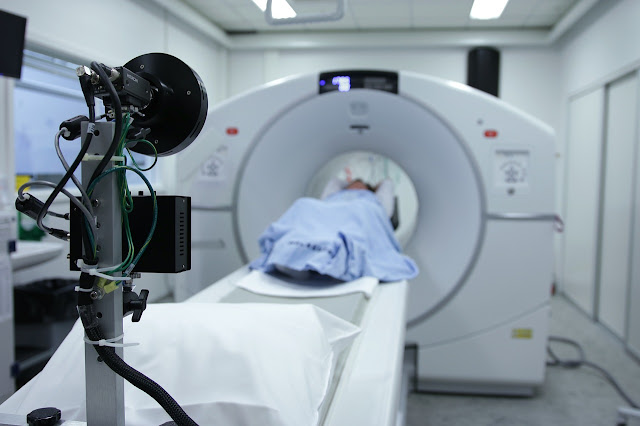5 Nursing Technologies that are Transforming the future of Patient Care
 |
| Image by Bokskapet from Pixabay |
The world has entered an exciting new frontier of revolutionized healthcare technologies and communications systems. Science evolves our healthcare system through jaw-dropping gadgets and tools and utilizing big data to improve patient outcomes. Portable tools and high-tech communication impact the nursing field by offering them critical insight and more efficient handling of patient care. Because nursing is such a demanding profession, technological developments that make the lives of nurses and patients easier are often eagerly anticipated.
So, let's take a look at the following nursing technologies that are transforming patient care.
1. Remote patient monitoring:
The limitations of in-hospital patient care due to COVID-19 have highlighted remote patient care and monitoring effectiveness. Nurses may now send and track patient health data such as physical activity, blood pressure, glucose levels, and so on, regardless of whether the patients are in the hospital or at home. Digitizing patient monitoring aims to relieve nurses from focusing on better targeted patient care and enhancing their skills. With a low chance of human error and more time, nurses can now easily go for higher education which is crucial for the healthcare systems. Technology allows many nurses to pursue higher education, such as online dnp programs and masters' programs. So they are better prepared to walk with new medical technologies and patient monitoring systems.
2. POC technology:
The Point of Care technology supports healthcare professionals by encompassing devices and systems that help provide actionable patient information at the care site. The biggest advantage of this technology is that it helps nurses and other healthcare professionals to make rapid clinical decisions. Nurses can now access medication information, second opinions from other healthcare individuals, X-rays, and patient records from the comfort of the patient's bedside. It allows nurses to be more vigilant about patient care with minimum error.
For instance, one type of POC technology that nurses are widely using is the medication scanners. The computer system checks and matches patient medication by scanning their identification bracelets. Moreover, nurses can easily analyze patient lab tests and recommend immediate treatment within minutes of drawing blood. POC technology reduces the need to write down vital signs like nurses used to do, which had a higher chance of human error and was extremely time-consuming.
3. Automated IV pumps and vein finding tools:
Setting up IV pumps for multiple patients with various doses can take up a nurse's precious time. Healthcare emergencies like COVID-19 have taught us the value of time and the need to be automated to ensure many people get treated as quickly and efficiently as possible. Automated IV pumps transform patient care to the next level. They hold libraries of various medications and ensure that the proper dosage gets administered at different rates and periods. As nurses use software and other technologies to regulate the dose for each patient, the time between adjustments grows shorter. It saves time for nurses to attend to more critical patients and perform other emergency tasks faster.
4. Electronic health records:
Electronic records have come very far in healthcare from just assisting in billing and scheduling. Electronic health records are a patient's health history that is cataloged and maintained digitally. They help the patient understand their health state and offer convenience to both healthcare professionals and the patients. Nurses, in particular, benefit the most from EHR because it provides almost little to no room for error and reduces the lengthy process for nurses to collect and transfer patient information. The flow and exchange of information are much faster, and there is less risk of inaccurate or incomplete information. Computerized documentation has been found to lead to better patient outcomes and nursing performance. Additionally, information once entered into the computer systems is far safer than paper records. At the same time, it also offers medical accuracy by providing real-time patient health updates.
5. Artificial intelligence and predictive analysis:
Can you imagine how convenient it would be if nurses were to know through a series of predictive analyses and assessments that a patient is at the brink of a mental breakdown? Or, what if the computer can predict that the patient would have specific symptoms in the future that are not yet diagnosable on the surface? It is all possible with the help of artificial intelligence and its ability to study healthcare data in real-time. Various AI programs and software will benefit nurses in the long run by notifying them about false alarms and cases that require immediate attention. For instance, Duke University's application of AI called Sepsis Watch helped assess a patient's risk for developing sepsis through a deep learning algorithm.
Conclusion:
As the world advances, we need to understand that the role of healthcare professionals, especially nurses, should evolve as well. Many technological advancements transform patient healthcare and allow nurses to utilize these technologies to expand their roles in research and other challenging healthcare aspects. AI-powered applications, automated tools such as palm vein technology and automated IV pumps, electronic health records, etc., have allowed nurses to provide patients with accurate and safer medical care. There is no doubt that the future of patient care and the nursing profession is headed in the right direction with these technologies.
